Theatre in B/W and Colour 1984
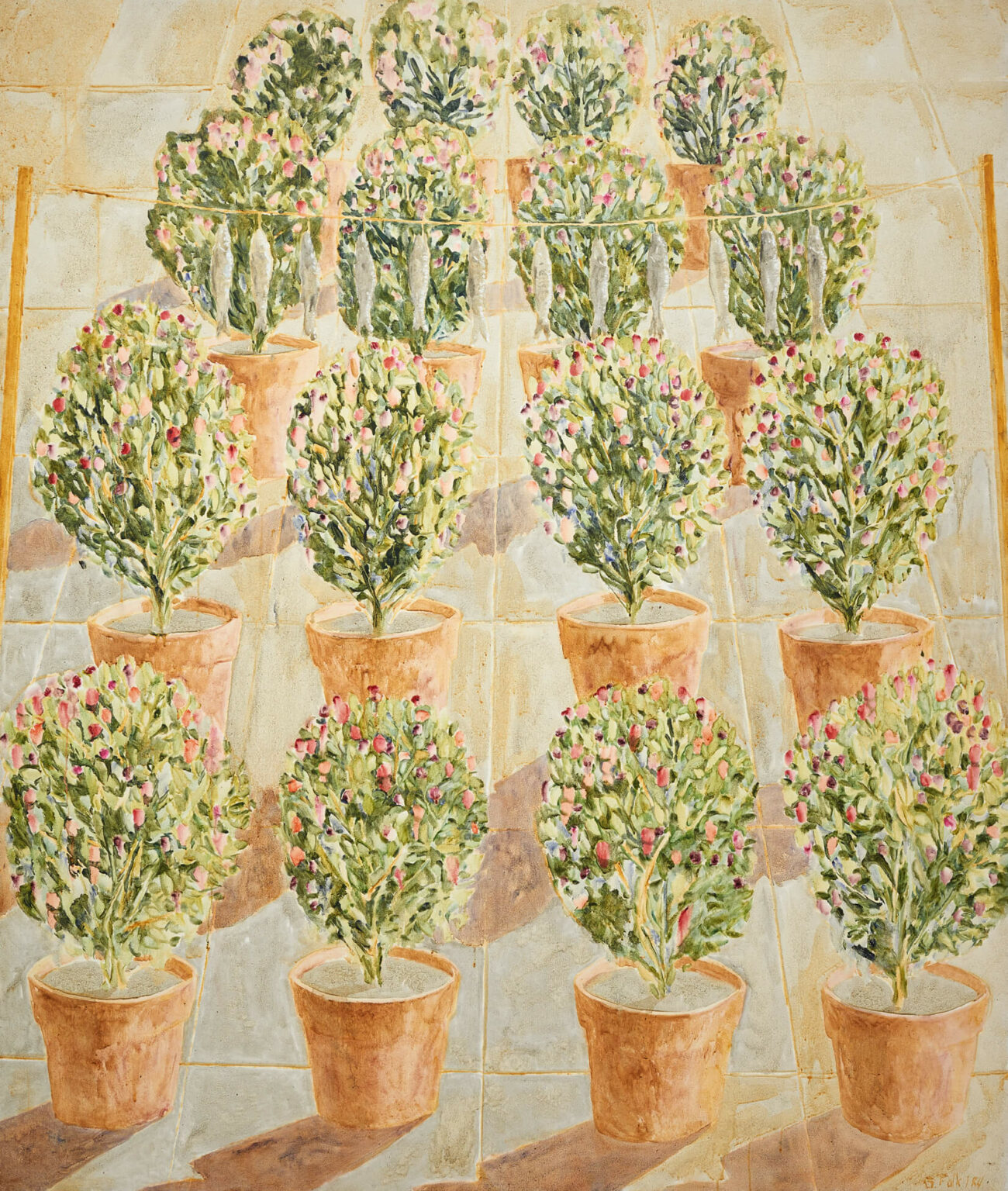
Gathie Falk, Theatre in B/W and Colour—Bushes with Fish in Colour, 1984
Oil on canvas, 198.2 x 167.4 cm
National Gallery of Canada, Ottawa
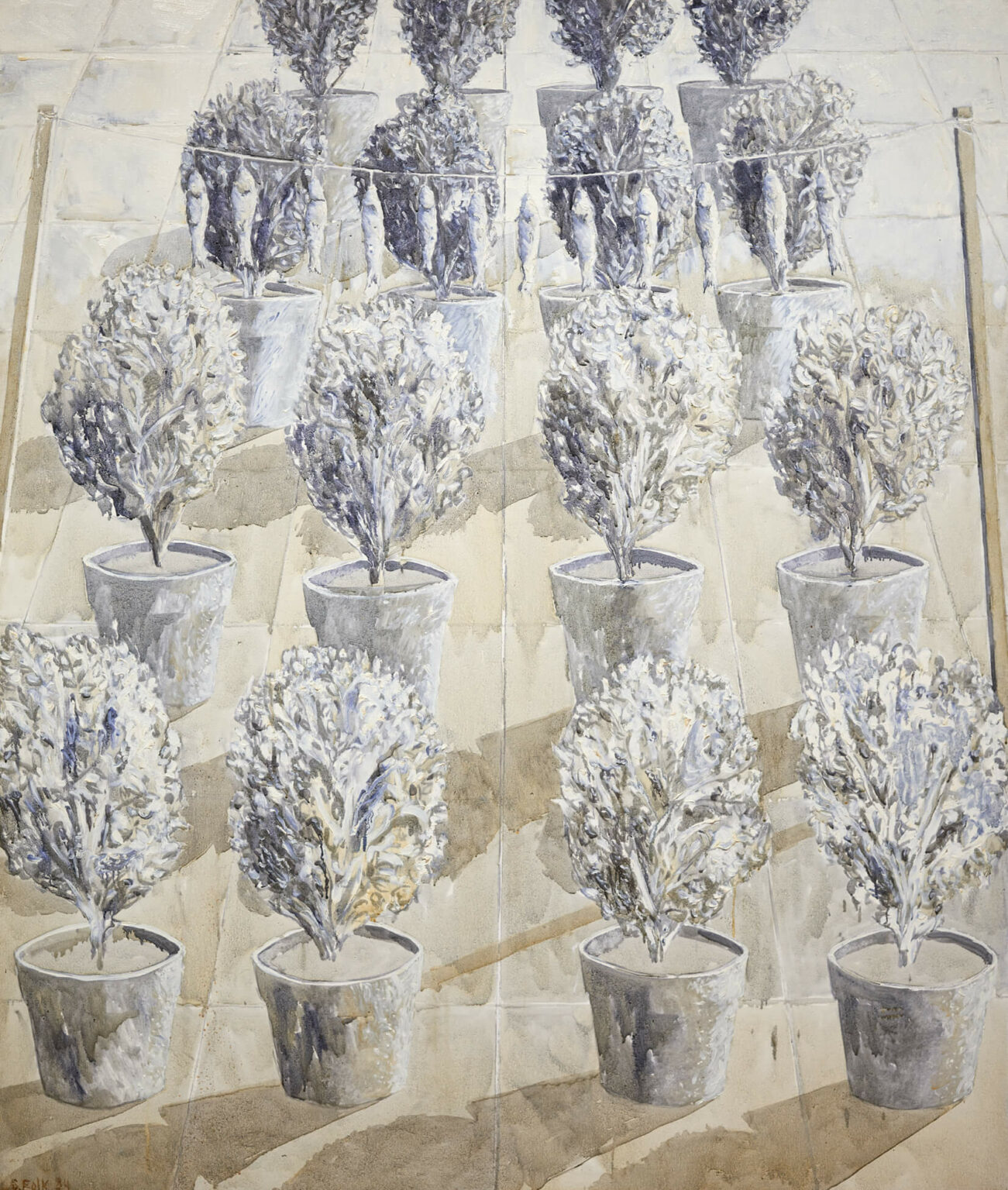
Gathie Falk, Theatre in B/W and Colour—Bushes with Fish in B/W, 1984
Oil on canvas, 198.2 x 167.4 cm
National Gallery of Canada, Ottawa
In Gathie Falk’s Theatre in B/W and Colour—Bushes with Fish in Colour and Theatre in B/W and Colour—Bushes with Fish in B/W, each canvas depicts sixteen potted bushes that are rounded in shape. In the first, the bushes are green, covered in pinkish-red buds, and contained in terracotta pots. They recede in a grid outlined by the criss-cross divisions of a grey, tiled ground. In between the middle rows of plants runs a line; twelve small grey fish hang from the cord by their mouths. All is repeated in grisaille in Bushes with Fish in B/W. Although both versions possess shadows that extend diagonally from each plant, in the black and white version they are particularly prominent and theatrical.
Perhaps because of her long history of performing with choral groups, Falk had never been inclined, as so many other performance artists are, to make an explicit distinction between her work and theatre. In fact, she and artist Tom Graff (active from the 1970s), her friend and collaborator, used the phrase “Theatre Art Works” to describe their performances.
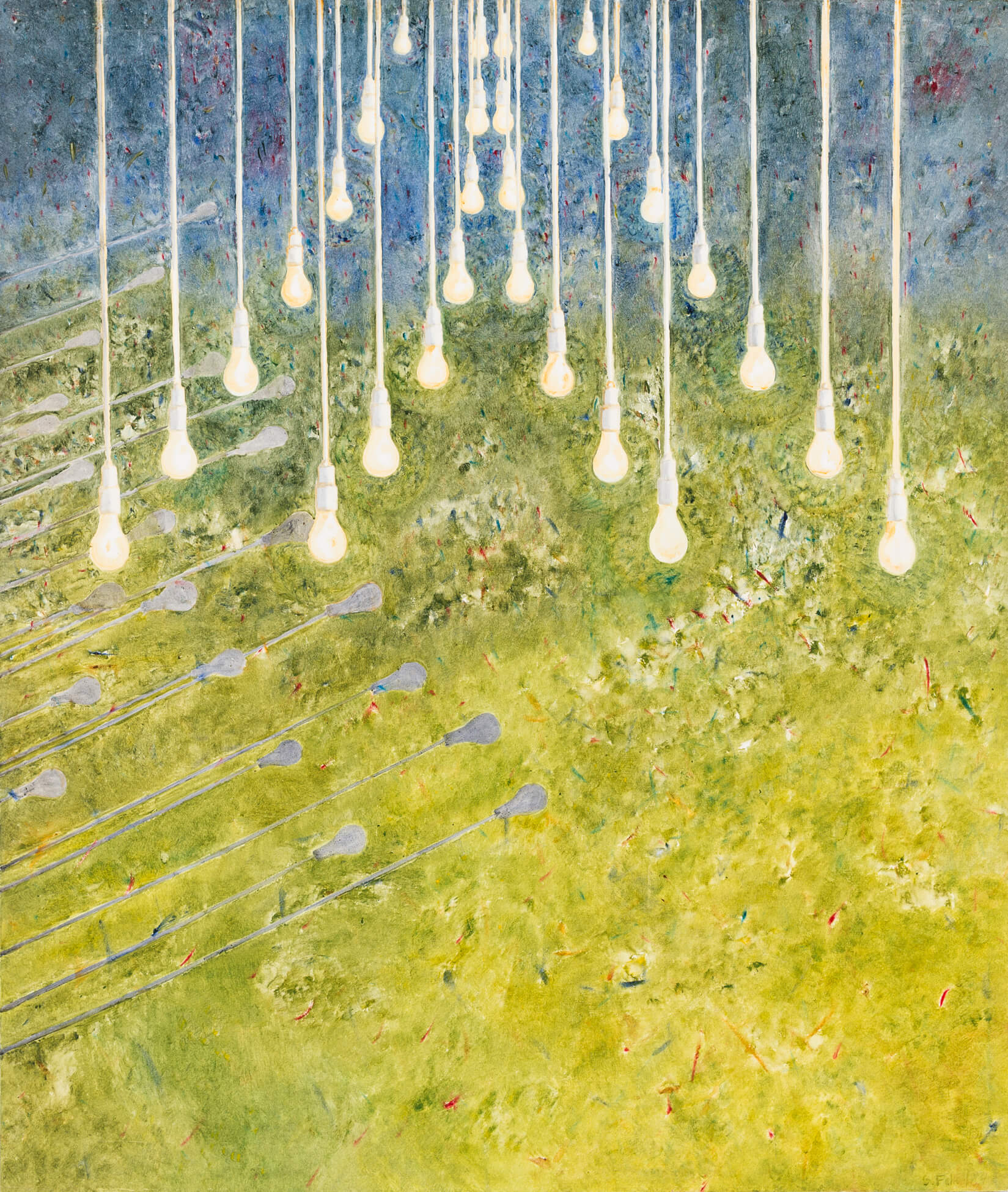
Eleven years after she created her final performance in 1972, Falk began this series, using the word “theatre” in the titles to denote both the dramatic moments and the anticipation inspired by the tensions inherent in the juxtapositions of the items depicted in the pairs of paintings. They are linked in intention and effect to Falk’s performance works, which similarly played on the collocation of uncannily married material elements, which one could easily imagine as the subjects of the paintings in the Theatre in B/W and Colour series: Popsicles and candles in Drill, 1970; stuffed parrots and angel wings in Red Angel, 1972; eggs and flashbulbs in Orange Peel, 1972.
In spring 1977, Falk travelled to Venice with Graff and their friend Elizabeth Klassen (b.1928). On a day trip to Padua, she saw frescoes by Giotto (1266/67–1337) in the Arena Chapel, noting that her “urge to paint was reborn … after a hiatus of eleven years.” In 1983 she dismantled the 4.5-square-metre gas kiln that had occupied most of her studio since she and ceramicist Charmian Johnson (1939–2020) had constructed it there in 1967.
The removal of the kiln made room for Falk to work on larger-scale painting series. The first works she made in her transformed studio were the Theatre in B/W and Colour paintings. Of these works, Falk has noted that “the theatre actually, I think, refers mostly to what I do during the summer that really has nothing to do with the painting…. I go out in my tiny little front garden and I watch everything grow… a sort of hourly little changes in growth. And so I watch things come up from seed and come to a climax and then denouement and that’s like theatre. But… the effect is painted sculpture.”
Just as Falk’s performances capitalized on the potential of connecting her viewers to an experience that played on the relationship between the corporeal and the illusory, the juxtaposition of black-and-white and colour versions of the same image similarly evoke a tension that kindles a vacillation between her viewer’s processing of the real and imagined origins of the objects depicted in the paintings.

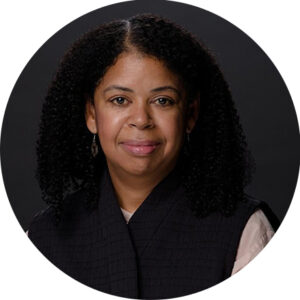 About the Author
About the Author
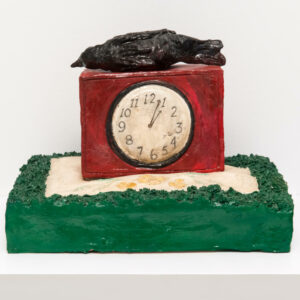 More Online Art Books
More Online Art Books
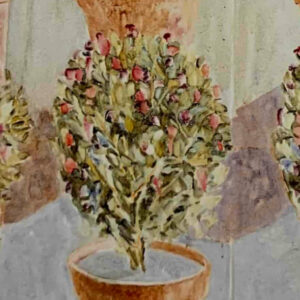 Acknowledgements
Acknowledgements